Xianlin Zhang
Sketch-1-to-3: One Single Sketch to 3D Detailed Face Reconstruction
Feb 25, 2025Abstract:3D face reconstruction from a single sketch is a critical yet underexplored task with significant practical applications. The primary challenges stem from the substantial modality gap between 2D sketches and 3D facial structures, including: (1) accurately extracting facial keypoints from 2D sketches; (2) preserving diverse facial expressions and fine-grained texture details; and (3) training a high-performing model with limited data. In this paper, we propose Sketch-1-to-3, a novel framework for realistic 3D face reconstruction from a single sketch, to address these challenges. Specifically, we first introduce the Geometric Contour and Texture Detail (GCTD) module, which enhances the extraction of geometric contours and texture details from facial sketches. Additionally, we design a deep learning architecture with a domain adaptation module and a tailored loss function to align sketches with the 3D facial space, enabling high-fidelity expression and texture reconstruction. To facilitate evaluation and further research, we construct SketchFaces, a real hand-drawn facial sketch dataset, and Syn-SketchFaces, a synthetic facial sketch dataset. Extensive experiments demonstrate that Sketch-1-to-3 achieves state-of-the-art performance in sketch-based 3D face reconstruction.
Temporal Consistent Automatic Video Colorization via Semantic Correspondence
May 13, 2023Abstract:Video colorization task has recently attracted wide attention. Recent methods mainly work on the temporal consistency in adjacent frames or frames with small interval. However, it still faces severe challenge of the inconsistency between frames with large interval.To address this issue, we propose a novel video colorization framework, which combines semantic correspondence into automatic video colorization to keep long-range consistency. Firstly, a reference colorization network is designed to automatically colorize the first frame of each video, obtaining a reference image to supervise the following whole colorization process. Such automatically colorized reference image can not only avoid labor-intensive and time-consuming manual selection, but also enhance the similarity between reference and grayscale images. Afterwards, a semantic correspondence network and an image colorization network are introduced to colorize a series of the remaining frames with the help of the reference. Each frame is supervised by both the reference image and the immediately colorized preceding frame to improve both short-range and long-range temporal consistency. Extensive experiments demonstrate that our method outperforms other methods in maintaining temporal consistency both qualitatively and quantitatively. In the NTIRE 2023 Video Colorization Challenge, our method ranks at the 3rd place in Color Distribution Consistency (CDC) Optimization track.
SPColor: Semantic Prior Guided Exemplar-based Image Colorization
Apr 14, 2023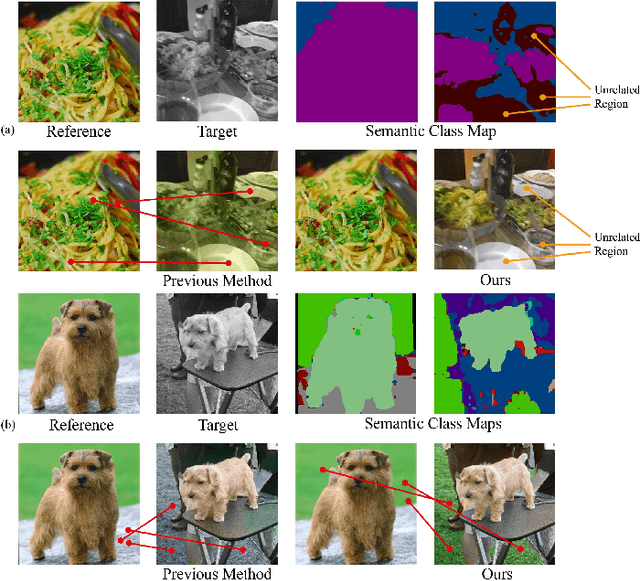
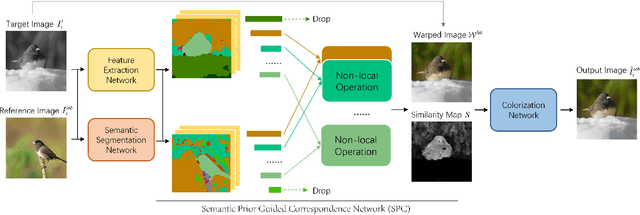
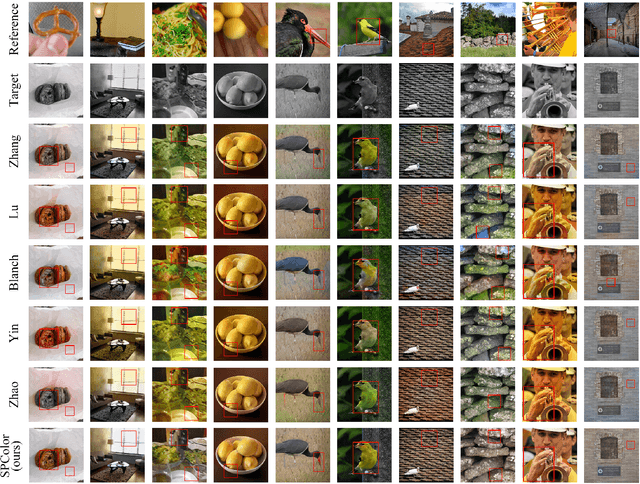
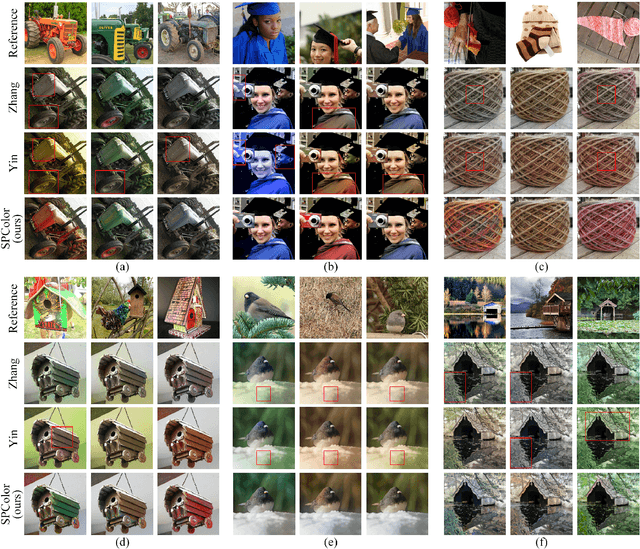
Abstract:Exemplar-based image colorization aims to colorize a target grayscale image based on a color reference image, and the key is to establish accurate pixel-level semantic correspondence between these two images. Previous methods search for correspondence across the entire reference image, and this type of global matching is easy to get mismatch. We summarize the difficulties in two aspects: (1) When the reference image only contains a part of objects related to target image, improper correspondence will be established in unrelated regions. (2) It is prone to get mismatch in regions where the shape or texture of the object is easily confused. To overcome these issues, we propose SPColor, a semantic prior guided exemplar-based image colorization framework. Different from previous methods, SPColor first coarsely classifies pixels of the reference and target images to several pseudo-classes under the guidance of semantic prior, then the correspondences are only established locally between the pixels in the same class via the newly designed semantic prior guided correspondence network. In this way, improper correspondence between different semantic classes is explicitly excluded, and the mismatch is obviously alleviated. Besides, to better reserve the color from reference, a similarity masked perceptual loss is designed. Noting that the carefully designed SPColor utilizes the semantic prior provided by an unsupervised segmentation model, which is free for additional manual semantic annotations. Experiments demonstrate that our model outperforms recent state-of-the-art methods both quantitatively and qualitatively on public dataset.
Exemplar-based Video Colorization with Long-term Spatiotemporal Dependency
Mar 27, 2023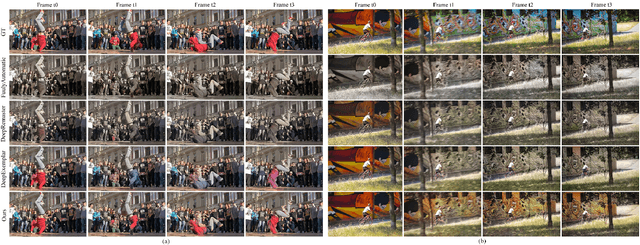

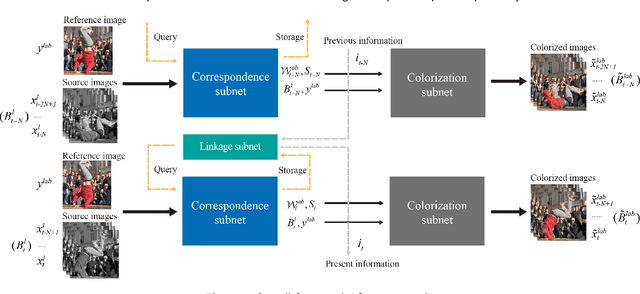

Abstract:Exemplar-based video colorization is an essential technique for applications like old movie restoration. Although recent methods perform well in still scenes or scenes with regular movement, they always lack robustness in moving scenes due to their weak ability in modeling long-term dependency both spatially and temporally, leading to color fading, color discontinuity or other artifacts. To solve this problem, we propose an exemplar-based video colorization framework with long-term spatiotemporal dependency. To enhance the long-term spatial dependency, a parallelized CNN-Transformer block and a double head non-local operation are designed. The proposed CNN-Transformer block can better incorporate long-term spatial dependency with local texture and structural features, and the double head non-local operation further leverages the performance of augmented feature. While for long-term temporal dependency enhancement, we further introduce the novel linkage subnet. The linkage subnet propagate motion information across adjacent frame blocks and help to maintain temporal continuity. Experiments demonstrate that our model outperforms recent state-of-the-art methods both quantitatively and qualitatively. Also, our model can generate more colorful, realistic and stabilized results, especially for scenes where objects change greatly and irregularly.
 Add to Chrome
Add to Chrome Add to Firefox
Add to Firefox Add to Edge
Add to Edge